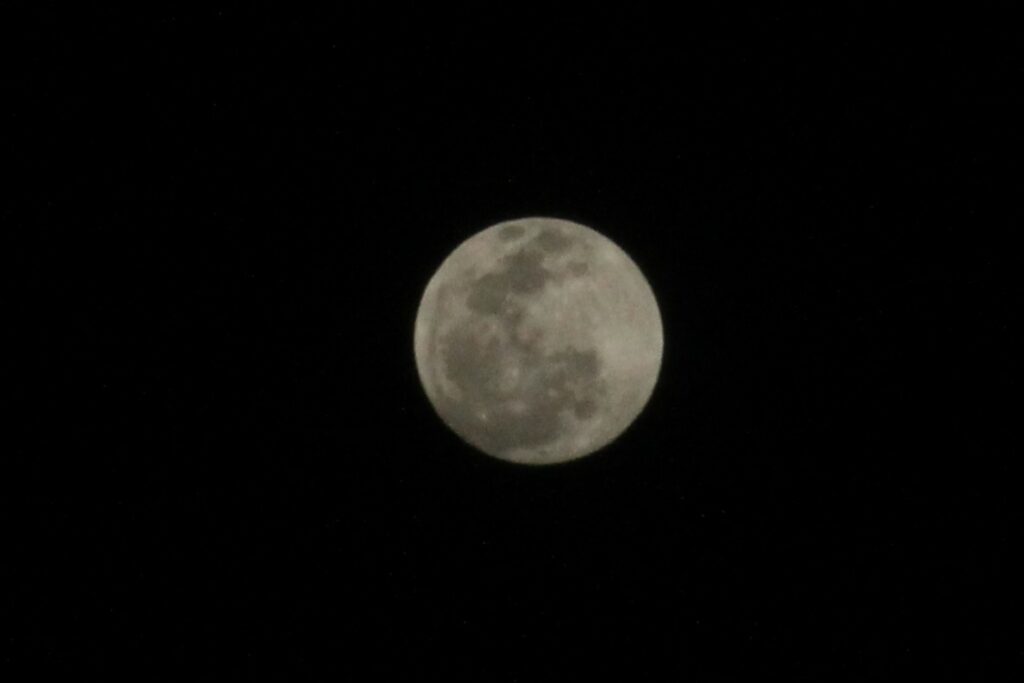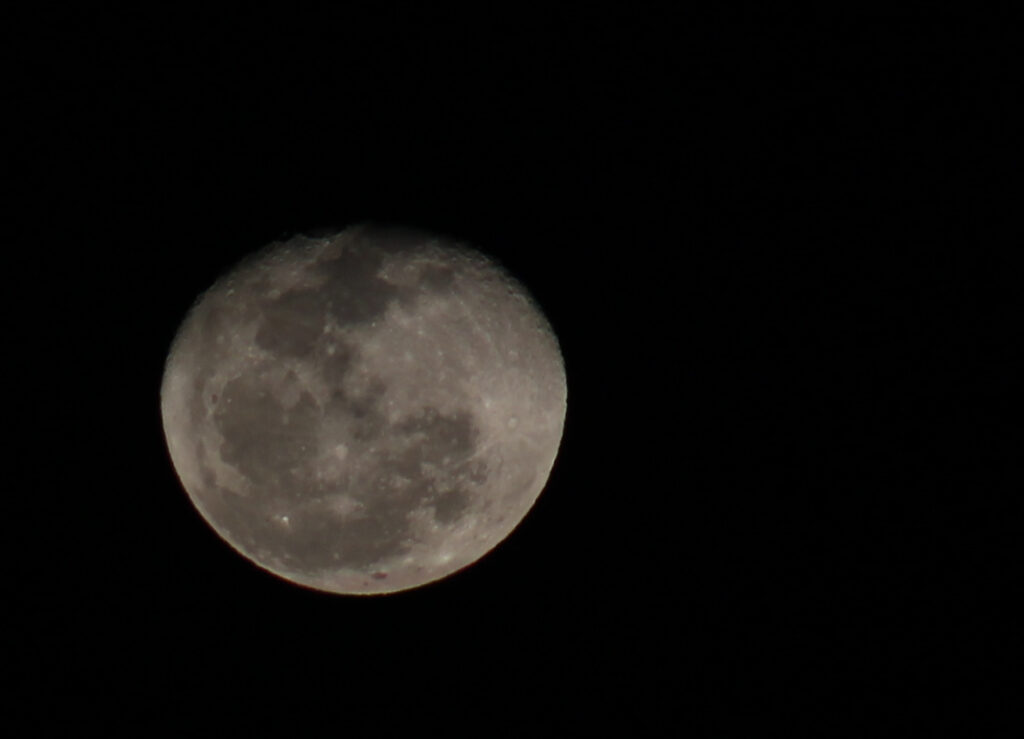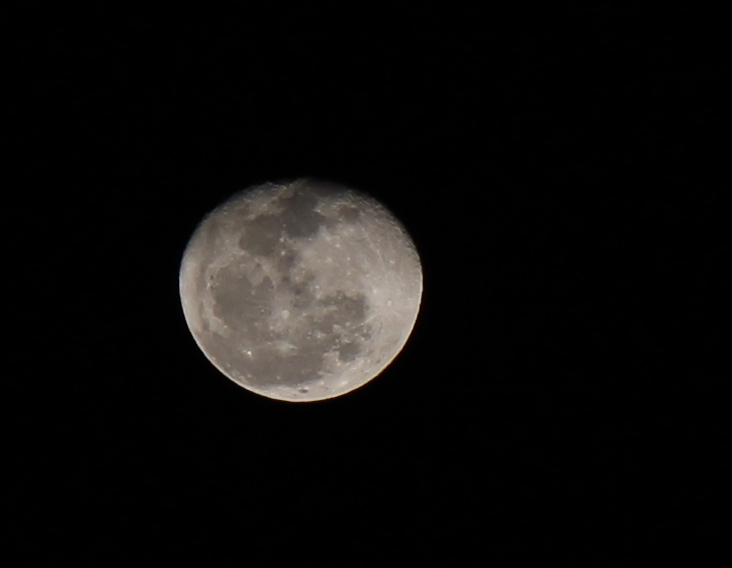Living in an urban jungle means there’s a LOT of the night sky that one can not observe. That makes the opportunity to see SOME phenomena an exciting opportunity. With all the fuss about the May eclipse (which was NOT visible here), that gave me the urge to break out the old tripod and have a shot at shooting the moon. The night before the full moon was a bit cloudy, but I managed a FEW shots, none of which turned out as I would have liked. Here’s an odd one, taken with “irregular settings”. Irregular as far as taking pictures of the moon goes, that is. BUT, even though the f/stop was very tight and the ISO was very high, the pic doesn’t look TOO bad, as long as you squint at it a bit out of only one eye. 😉

I played with all kinds of settings, shared the pic above on FB group, got criticized for trying something “unorthodox” or “irregular” or some such – but I had a blast and learned a bit about my camera and other equipment in the meantime. The next day, May 5, was the REAL full moon, but it appeared only briefly, and screened by a lot of haze and clouds. And then it went into full hiding and I gave up for the night. BUT, I DID get one shot that was “according to proper procedure”. Same camera and lens as above, the ISO set to 100, f/8 and 1/200 to 1/320 if I recall correctly – and the pic was BLACK, not even a hint of the moon. Huh? Well, it turns out there’s more to setting up the camera than just aperture/shutter speed/ISO – pay attention to the metering! I’d been fooling around with that, and forgot to set it back to evaluative metering, having left it on center weighted average. At least I THINK that’s what happened, and I scrubbed the few pics taken as none were usable.
And then last night I got a chance to try again. Once more, not quite full, the moon is waning but still lovely and bright. We were outside watering the flowers when my wife said “Look at the moon!”. So I grabbed the T3 Rebel and tripod and the same lens and started playing around again.

I tried the same experiment I’d tried the night before the full moon, and it went smoother as the evening was clear for once. I tried shots from ISO 100 to 6400 and from a shutter speed of 1/10 to 1/4000 and f/stops from 4 – 45. No way did I come close to a complete sampling of the options and combinations, but enough to get a feel for what settings impact the image in what ways. The picture above was one of the best and was one of the closest to “the approved settings for moon shots”. The problem being, the 75-300 lens is a bit fiddly and it didn’t always focus as well as I’d like. And that was also difficult to see as my vision isn’t the sharpest anyway.
So I grabbed the Ef-S 55-250 4-5.6 IS II lens and gave it a whirl as well.

And there you have it, folks. A fairly clean and clear shot using the recommended settings. The image is cropped, of course, as a 55-250 lens just doesn’t drag the moon close enough to NOT need cropping. I don’t know what it is about the moon that we find so attractive and “photo worthy”, but we do. I’ve got a vintage lens that I hope to pick up soon that I look forward to playing with in this context some day. It will be interesting to see if I can focus it sharp enough to take advantage of it.
Then God said, “Let there be lights in the expanse of the sky to separate the day from the night. They will serve as signs for festivals and for days and years. They will be lights in the expanse of the sky to provide light on the earth.” And it was so.God made the two great lights—the greater light to have dominion over the day and the lesser light to have dominion over the night—as well as the stars. God placed them in the expanse of the sky to provide light on the earth, to dominate the day and the night, and to separate light from darkness. And God saw that it was good. Evening came and then morning: the fourth day.
Genesis 1:14-19 HCSB